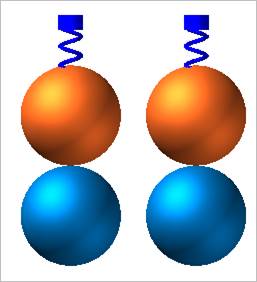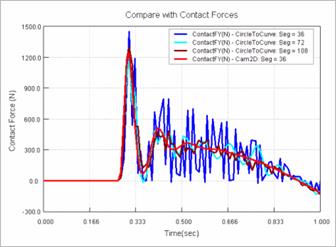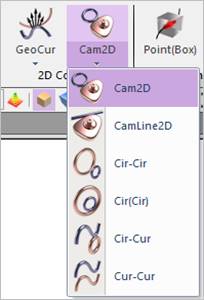
A Cam2D Contact generates a force between a circle (or a sphere) and a curve. This contact is smooth circle to curve contact in 2D. The base curve has a RM and many points. The action circle has a RM and its radius. The base curve is parameterized from many points and creates a contact curve fitted on a cubic spline.
•The circle and the curve must belong to two different bodies.
•If the base curve is not only convex curve but also concave curve, the generalized contact force is very smooth. There is no noise caused by a contact geometry approximation.
•This contact supports only one contact point at a point where a contact penetration is the deepest.
•The contact force can be not only linear or exponential but also nonlinear spline characteristics to the contact penetration and its velocity.
The base curve is a curve fitted to passing points as shown in Figure 1.

Figure 1 Fitted base contact curve
As shown Figure 2, let’s suppose a roller pair in 2D. The left and right roller pairs are the same material property. The contact of left roller pair is modeled with Cam2D Contact and that of right roller pair is modeled with a circle to curve contact. The resultant contact forces are compared in Figure 3. As shown in Figure 3, the contact force generated by the Cam2D is very smooth. On the other hand, the solutions of the circle to curve contact are noisy. But as the number of segments of a base curve is larger, the contact force is closer to that of Cam2D.

Figure 2 Example model of Cam2D Contact

Figure 3 Comparison with the solutions

Figure 4 Cam2D icon of the 2D Contact group in the Professional tab